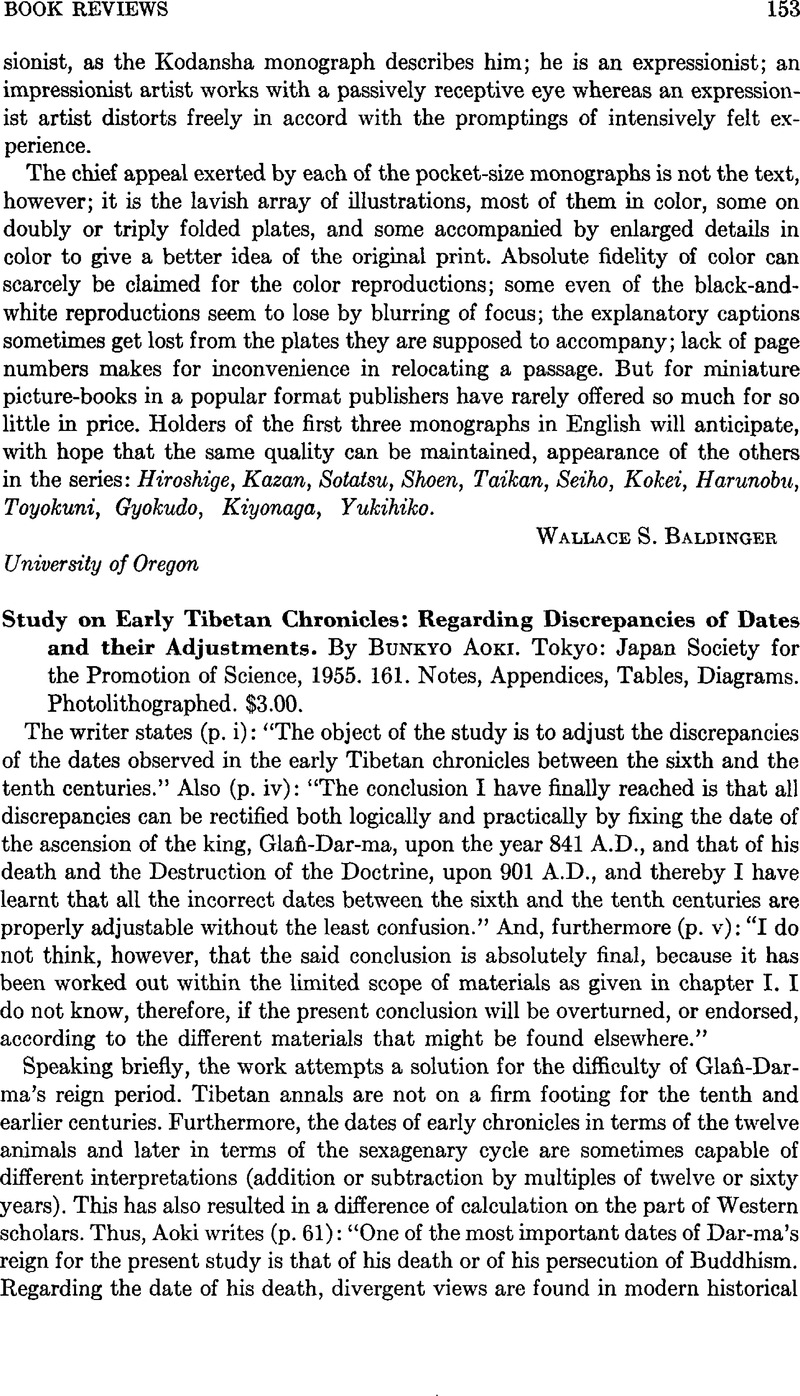No CrossRef data available.
Article contents
Study on Early Tibetan Chronicles: Regarding Discrepancies of Dates and their Adjustments. By Bunkyo Aoki. Tokyo: Japan Society for the Promotion of Science, 1955. 161. Notes, Appendices, Tables, Diagrams. Photolithographed. $3.00.
Review products
Published online by Cambridge University Press: 23 March 2011
Abstract

- Type
- Book Reviews
- Information
- Copyright
- Copyright © The Association for Asian Studies, Inc. 1956
References
1 Cf. Roerich, George N., The Blue Annals (Calcutta, 1949), Part One, p. xv.Google Scholar
2 Demiéville, Paul, Le Concile de Lhasa, Bibliothèque de l'Institut des Hautes Études Chinoises, Vol. VII (Paris, 1952), I, 177, 183, etc.Google Scholar
3 In a passage involving both phyogs and mdo, I translated phyogs as “class” in “Notes on the Sanskrit Term Jñāna,” JAOS, LXXV (1955), 255Google Scholar, in the phrase “… phyogs gcig tu bsgrigs paḥi mdo maṅ.”
4 Cf. Tucci, Giuseppe, Pre-Diṅnāga Buddhist Texts on Logic from Chinese Sources, Gaekwad's Oriental Series No. XLIX (Baroda, 1929), “Indices,” pp. 66–67Google Scholar, where Chinese equivalents are also given.
5 Petech, Luciano, A Study on the Chronicles of Ladakh (Calcutta, 1939Google Scholar; also Suppl. to Indian Historical Quarterly, XV), pp. 82–84.Google Scholar
6 Obermiller, E., History of Buddhism by Bu-ston (Heidelberg, 1932), II, 211.Google Scholar
7 Roerich, , p. 67.Google Scholar


